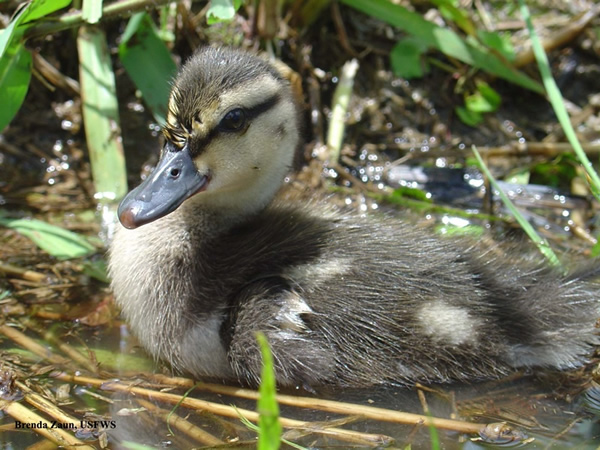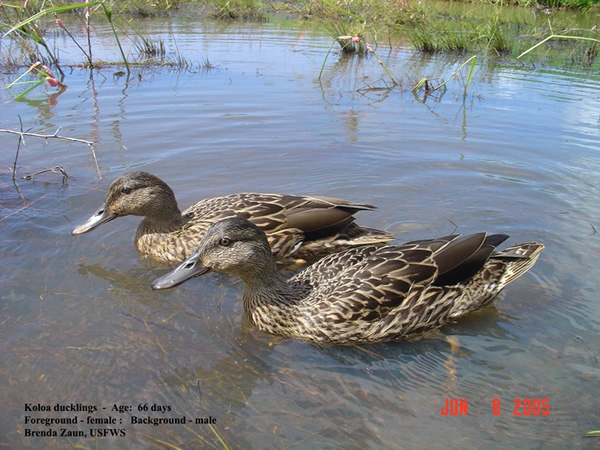Koloa Maoli

Names
-
ʻŌlelo Hawaiʻi: Koloa Maoli
-
Common: Hawaiian Duck
-
Scientific: Anas wyvilliana
Song
Conservation Status
- Federally Listed as Endangered
- State Listed as Endangered
- IUCN Red List Ranking – Endangered
Species Information
The koloa maoli, or Hawaiian duck, is one of two surviving native duck species (Family: Anatidae) found in Hawai‘i and is closely related to the well-known, but nonnative mallard (A. platyrhynchos). Adult males and females are marked with brown spots overall. Males have darker heads and necks, olive bills and bright orange feet. The bills of females are more orange, their feet are dull orange, and they are smaller than males. Koloa maoli forage in a wide variety of freshwater habitats, including artificial wetlands. Movements between feeding and breeding habitats and between Kaua‘i and Ni‘ihau occur. The species typically forages in shallow water (less than 13 centimeters, or 5 inches, deep). Like mallards, koloa maoli are opportunistic and their diet includes snails, dragonfly larvae, earthworms, grass seeds, green algae, and seeds/leaf parts of wetland plants. They are usually found alone or in pairs and are wary, especially when nesting or molting, although during the winter they may gather in larger numbers to exploit abundant food resources. Nesting biology is poorly known. Although some pairs nest in lowland habitats, on Kaua‘i, they nest in the upper Alaka‘i swamp. Nesting occurs year-round, but most activity occurs between January and May. Nests are usually on the ground near water, but few nests are found in areas frequented by humans or areas supporting populations of mammalian predators. Generally eight to ten eggs are laid, and the precocial chicks (well developed to feed and move by themselves) hatch after an unknown incubation period, but likely less than 30 days.
Distribution
Wetland habitats from sea level to 3,000 meters (9,900 feet) elevation on all the Main Hawaiian Islands except for Kaho‘olawe; populations on all islands except for Kaua‘i originated from reintroduced birds. On Kaua‘i, koloa maoli are found in Hanalei National Wildlife Refuge and montane streams. On O‘ahu, they occur in Kawainui, Hāmākua, and He‘eia marshes; James Campbell National Wildlife Refuge; and wetland habitats in or near Punaho‘olapa, Hale‘iwa, Pearl Harbor, and Lualualei Valley. On Maui, koloa maoli occur in Kahului, Kanahā, and Keālia ponds. On the island of Hawai‘i, they occur in the Kohala Mountains; Pololū, Waimanu, and Waipi‘o valleys; and Mauna Kea. Historically, koloa maoli occurred on all the Main Hawaiian Islands except for Lāna‘i and Kaho‘olawe.
Habitat
Koloa maoli occurs in a wide variety of natural and artificial wetland habitats, including freshwater marshes, flooded grasslands, coastal ponds, streams, montane pools, forest swamplands, taro, lotus, shrimp, and fish ponds, irrigation ditches, reservoirs, and mouths of larger streams. Some important habitats are located in National Wildlife Refuges or on State lands and receive management attention, but others remain unprotected, such as wetlands facing development or those used for agriculture or aquaculture. Examples include playa lakes on Ni‘ihau; Opaeka‘a marsh; Lumaha‘i wetlands on Kaua‘i; Amorient prawn farms; Lā‘ie wetlands; Uko, Punaho‘olapa, and Waihe‘e marshes; Waialua lotus fields; Waipi‘o Peninsula ponds on O‘ahu; Paialoa and ‘Ō‘ō‘ia playa fishponds on Moloka‘i; and Opae‘ula and Waiākea-Loko Waka ponds on the island of Hawai‘i.
Threats
Historically, hunting pressure likely reduced populations. Like the rest of Hawaiian native waterbirds, koloa maoli are threatened by:
- Hybridization. Currently, the most important threat to koloa maoli is hybridization with nonnative mallards, especially on O‘ahu, where most individuals are hybrids.
- Habitat loss and degradation. In the last 110 years, approximately 31 percent of coastal plain wetlands have been lost. A shift from wetland agriculture to other types of crops has also reduced the amount of wetland habitats. Feral pigs and goats are reducing nesting habitat suitability for koloa maoli along montane streams.
- Introduced and native predators. Eggs and ducklings are especially vulnerable to predation by dogs (Canis familiaris), rats (Rattus spp.), feral cats (Felis silvestris), the small Indian mongoose (Herpestes auropunctatus), ‘auku‘u or black-crowned night herons (Nycticorax nycticorx hoactli), cattle egrets (Bulbulcus ibis), barn owls (Tyto alba), and nonnative fish.
- Altered hydrology. Altering wetland habitats for flood control or to serve as municipal water sources makes them generally unsuitable for koloa maoli.
- Nonnative invasive plants. Several species of invasive plants, including pickleweed (Batis maritime), water hyacinth (Eichornia crassipes), and mangrove (Rhizophora mangle), reduce open water, mudflats, and shallows.
- Avian diseases. Botulism outbreaks result in mortality. West Nile virus and avian flu may pose a risk to Hawaiian waterbirds if these diseases reach Hawai‘i.
- Environmental contaminants. Fuel and oil spills in wetlands result in toxicity and habitat degradation.
Learn more
Plans & Projects
- Koloa Maoli Research Project
- State of Hawaiʻi Biannual Waterbird Surveys
- Kawainui Marsh Wetland Restoration and Habitat Enhancement Plan
Photos
Additional Resources
For more information and references visit the DLNR State Wildlife Action Plan factsheets. DOFAWʻs species pages and State Wildlife Action Plan fact sheets are provided for general information and are not meant to be a citable, original source of data. If you are a student, researcher, or writer looking for a citable source, please explore the references below or find other original data sources, rather than citing these webpages. The references below were provided by the authors of the State Wildlife Action Plan fact sheets at the time of drafting:
- Engilis A Jr., Uyehara KJ, Giffin, JG. 2002. Hawaiian duck (Anas wyvilliana). In The Birds of North America, No. 694 (Poole A, Gill F, editors). Philadelphia, (PA): The Academy of Natural Sciences; and Washington DC: The American Ornithologists’ Union.
- IUCN Red List of Threatened Species. 2015. Version 2014.3. www.iucnredlist.org. (Accessed May 2015).
- U.S. Fish and Wildlife Service. 2010. Koloa maolo or Hawaiian duck (Anas wyvilliana) 5-year review: summary and evaluation. U.S. Fish and Wildlife Service, Honolulu, Hawai‘i.
- U.S. Fish and Wildlife Service. 2011. Recovery plan for Hawaiian waterbirds, Second Revision. U.S. Fish and Wildlife Service, Portland, Oregon.

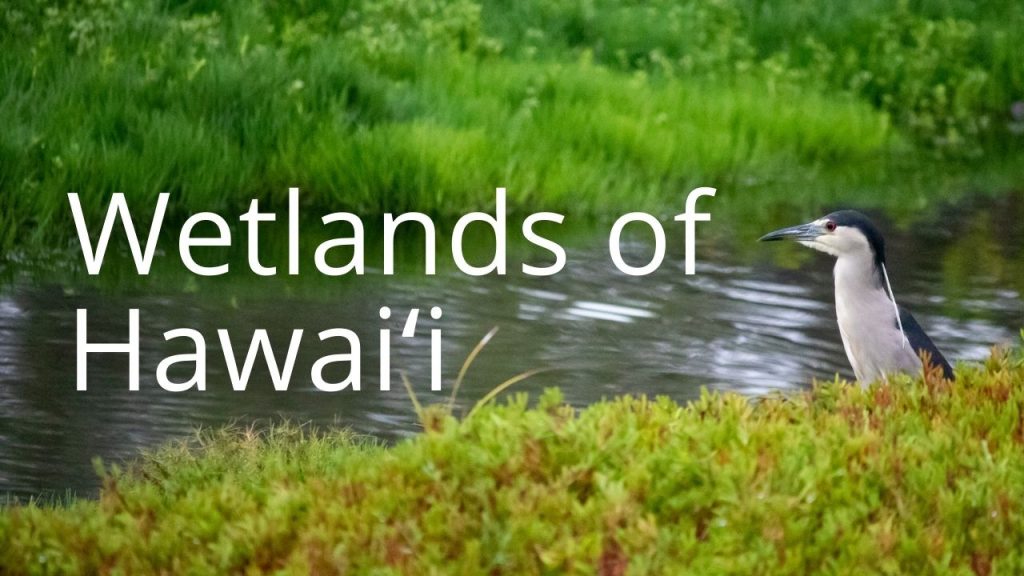 Wetlands of Hawaiʻi Story Map
Wetlands of Hawaiʻi Story Map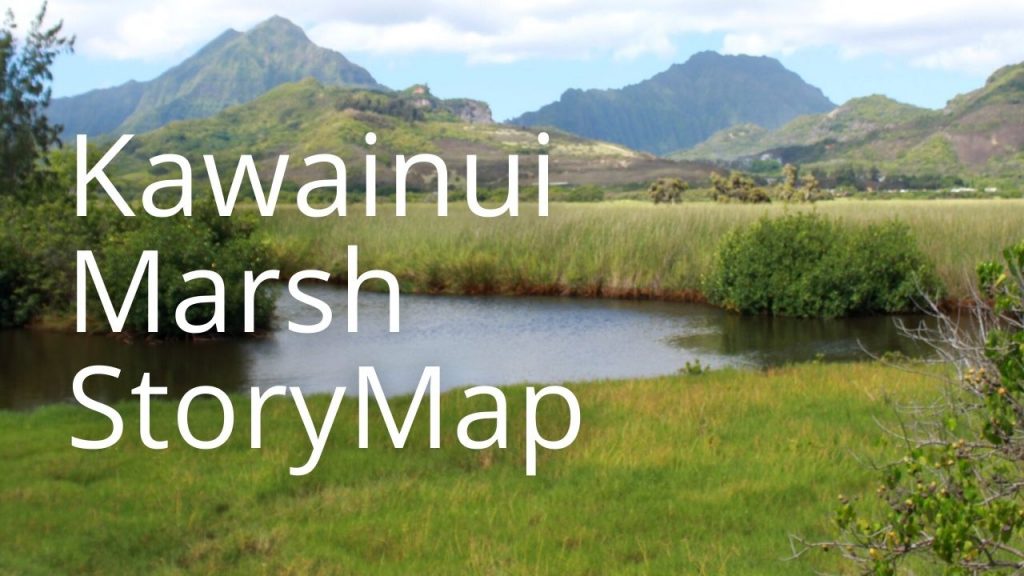 Kawainui Marsh Story Map
Kawainui Marsh Story Map Kawainui Marsh Virtual Tour
Kawainui Marsh Virtual Tour Pouhala Marsh Story Map
Pouhala Marsh Story Map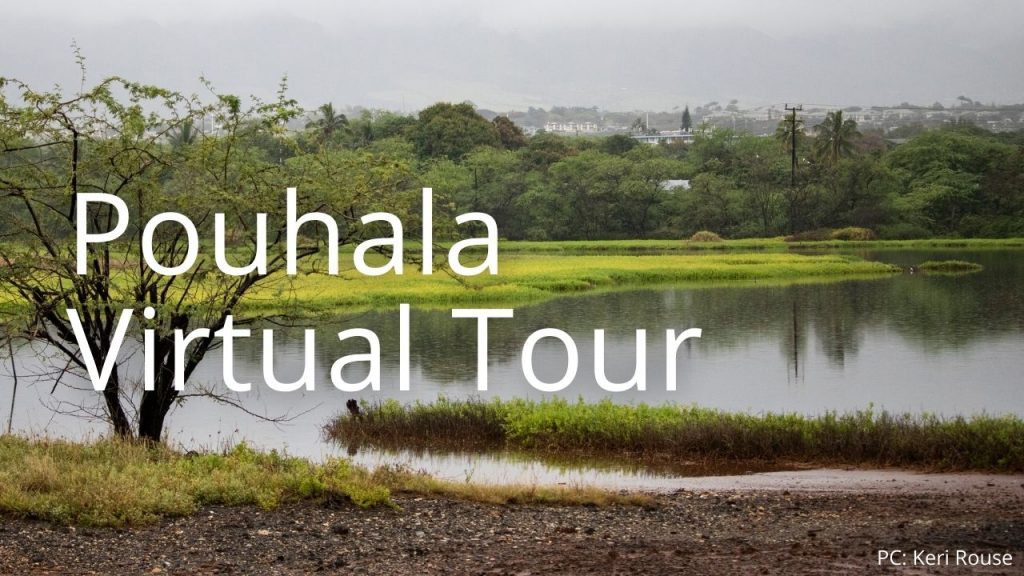 Pouhala Marsh Virtual Tour
Pouhala Marsh Virtual Tour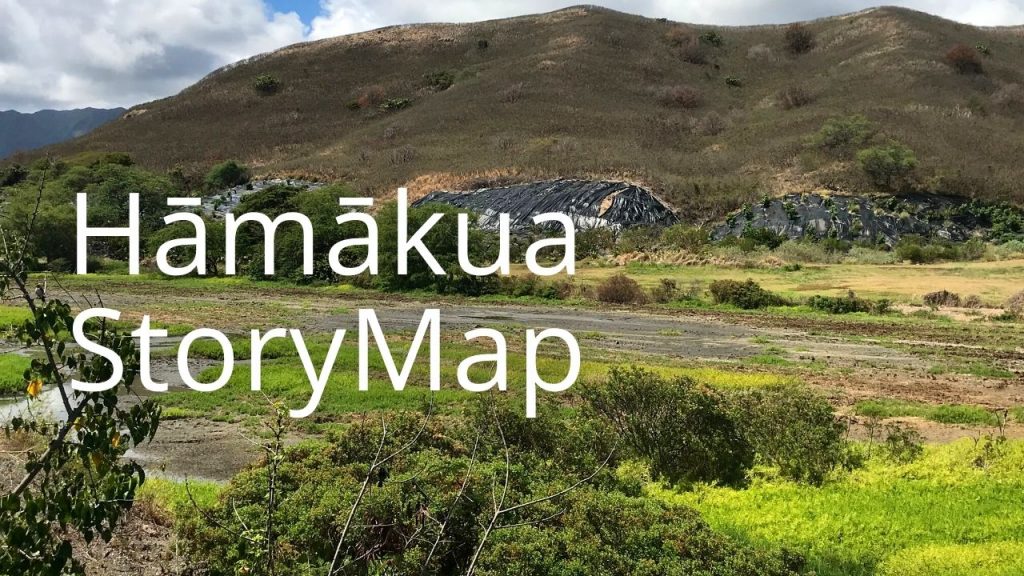 Hāmākua Marsh Story Map
Hāmākua Marsh Story Map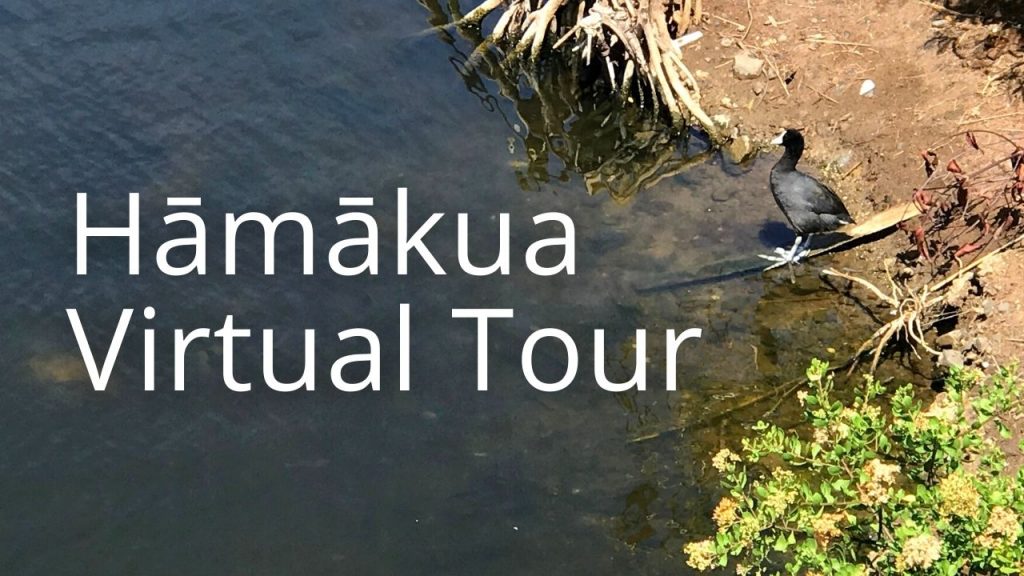 Hāmākua Marsh Virtual Tour
Hāmākua Marsh Virtual Tour